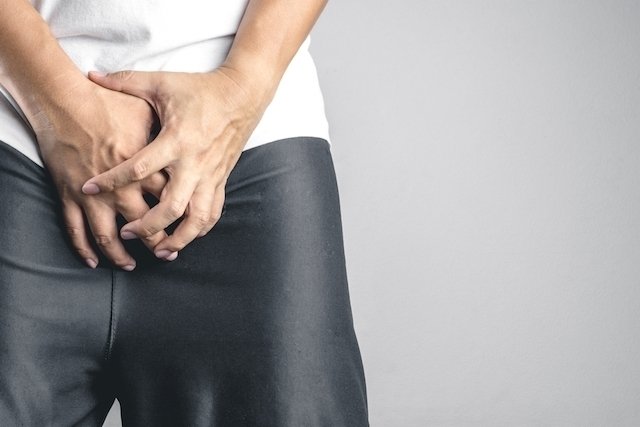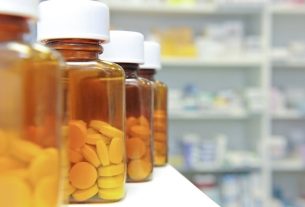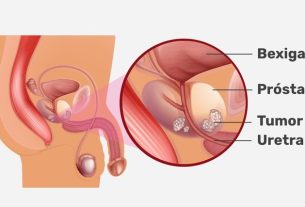Medicines for male candidiasis, such as clotrimazole, nystatin or fluconazole, have antifungal action that help eliminate the fungus Candida albicans and relieve symptoms of itching, redness, increased sensitivity of the glans and/or foreskin, or even white discharge, and can be used in the form of ointments or tablets.
In addition to medications, some daily care, such as keeping the intimate area dry, avoiding intimate contact during treatment and adopting a diet low in carbohydrates, such as rice, potatoes and bread, and sugar, are also important to treat candidiasis. penis and help heal it faster.
Treatment for male candidiasis must be carried out by a urologist, after assessing the penis and general health, who can indicate the best medicine to alleviate symptoms, on an individual basis, and avoid complications such as wounds or phimosis, for example.
Main remedies for male candidiasis
The main remedies for male candidiasis are:
1. Clotrimazole
Clotrimazole is an ointment for candidiasis in men that has antifungal action, which inhibits the growth of the Candida albicans fungus, relieving symptoms of itching, reddish or whitish plaques on the penis, pain, burning or swelling in the glans or foreskin.
This ointment can be found in the form of a dermatological cream containing clotrimazole 10 mg/g, as a generic or under the trade names Canesten or Dermobene, for example.
How to use: Clotrimazole ointment should be applied to the glans and foreskin 2 to 3 times a day, for 1 to 2 weeks, as advised by the urologist.
2. Miconazole
Antifungal ointment for candidiasis in men containing nystatin prevents the growth and multiplication of the fungus Candida albicansrelieving the symptoms of male candidiasis.
This antifungal ointment can be found as generic “miconazole nitrate” dermatological cream 20 mg/g, and should be used under the guidance of a urologist.
How to use: apply miconazole nitrate ointment to the glans and foreskin, twice a day, morning and night, for 1 to 3 weeks, as instructed by the urologist.
3. Nystatin
Nystatin for male candidiasis is another antifungal ointment that may be recommended by a urologist as it prevents the growth and multiplication of the Candida albicans fungus, relieving symptoms.
Generally, this ointment is found as a vaginal ointment with applicators, but it can be used on men on the glans and foreskin, without the need to use applicators.
How to use: apply nystatin ointment, 1 or 2 times a day, for 1 to 3 weeks, applying the ointment to the glans and foreskin, as instructed by the urologist.
4. Hydrocortisone
Hydrocortisone is a corticosteroid ointment that may be recommended by your doctor to relieve inflammation in the glans and foreskin, relieving symptoms when they are more intense.
However, this ointment does not eliminate the fungus. Candida albicansbut can be associated with treatment with antifungal ointments.
Hydrocortisone ointment can be found in the form of a 10 mg/g dermatological cream, as generic “hydrocortisone acetate”.
How to use: Apply a thin layer of hydrocortisone acetate ointment to the glans and foreskin, 2 to 3 times a day, massaging lightly. The duration of use of hydrocortisone ointment must be guided by the urologist. Learn how to use hydrocortisone correctly.
5. Fluconazole
Fluconazole is a single-dose antifungal that inhibits the growth of Candida albicansbeing indicated in the most serious cases with more intense inflammation in the glans or foreskin.
In some cases, the urologist may recommend combining treatment with antifungals in the form of creams and ointments, together with the fluconazole capsule.
How to use: the capsule must be taken orally, and the recommended dose is 1 capsule of fluconazole 150 mg in a single dose. Find out how to take fluconazole correctly.
Care during treatment
In addition to using medications prescribed by your doctor, to treat penile candidiasis, you must always follow certain precautions in order to cure the disease more quickly, including:
- Apply the ointment recommended by the doctor to the glans and foreskin after local hygiene;
- Carry out treatment for the time recommended by the urologist, even if symptoms improve quickly;
- Keep the genital region always clean and dry;
- Avoid sexual relations during the period when you are in crisis or undergoing treatment;
- Avoid eating foods rich in fats and sugars;
- Increase vitamin C consumption with the aim of boosting the immune system;
- Drink a lot of water;
- Eat more greens and vegetables;
- Avoid the consumption of alcoholic beverages;
- Do not smoke;
- Use a condom in all sexual relations;
- Avoid tight-fitting and synthetic clothing.
Treatment for candidiasis must be carried out by both the man and his partner, if there has been sexual intercourse, so that the disease is completely eliminated. Find out how to identify candidiasis in men.
Signs of improvement
Signs of improvement in male candidiasis include a decrease in pain during intimate contact, as well as a decrease in redness and swelling, and the disappearance of whitish plaques on the penis and discharge.
Signs of worsening
Signs of worsening candidiasis in men appear when treatment is not carried out or is carried out incorrectly and include increased pain, redness and swelling, as well as the appearance of whitish plaques on the penis.
Home remedy for candidiasis in men
An option for a home remedy for candidiasis in men is to apply natural yogurt directly to the area affected by the fungus, leaving it to act for around 30 minutes.
Yogurt is effective because it contains beneficial bacteria that help reduce and alleviate the symptoms of candidiasis. It is recommended that the yogurt used is as natural as possible, that is, free of additives, fats and sugar.
Nutrition is also a great help to recover faster from the itching and discomfort caused by candidiasis. See what to eat and what to avoid to speed up the treatment of candidiasis.

Sign up for our newsletter and stay up to date with exclusive news
that can transform your routine!
Warning: Undefined array key "title" in /home/storelat/public_html/wp-content/plugins/link-whisper-premium/templates/frontend/related-posts.php on line 12
Warning: Undefined array key "title_tag" in /home/storelat/public_html/wp-content/plugins/link-whisper-premium/templates/frontend/related-posts.php on line 13




